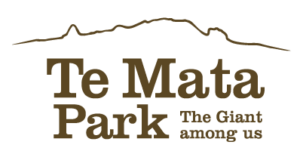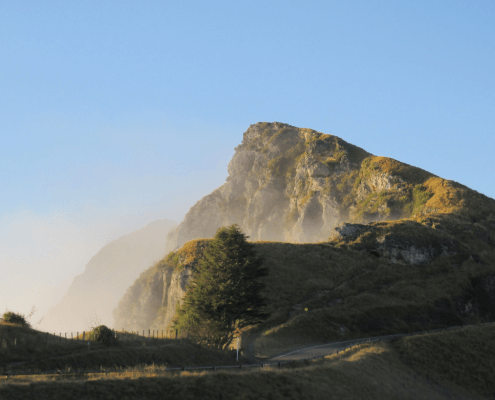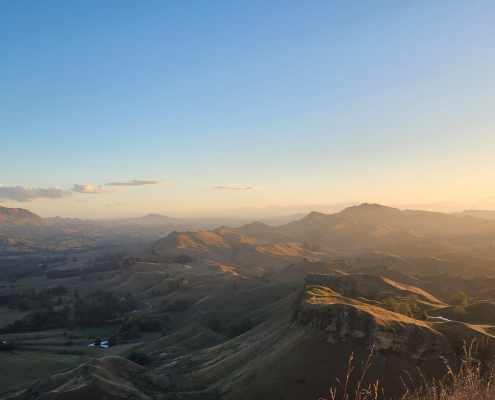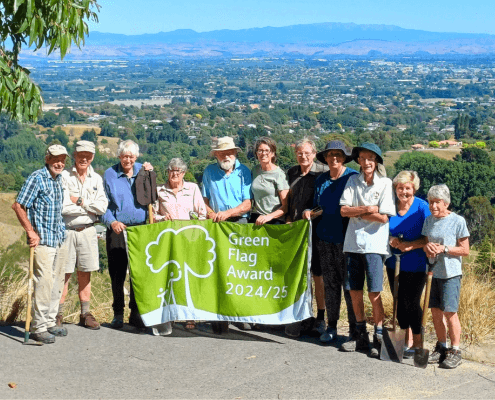26 AUGUST 2024
Winter Newsletter
Despite the winter months, hibernation has not been on the agenda of our Park team, supporters, or volunteers. In this edition of our newsletter, we share the mahi that has been undertaken in the Park, the return of the Peak Trail Blazer, an acknowledgement of Hastings District Council support, a donation spotlight, words from the indomitable Mike Lusk, and more.
Our stalwart supporter: Hastings District Council
At the recent close of another financial year, we took a moment to acknowledge those who unfailingly support Te Mata Park, particularly Te Kaunihera ā-Rohe o Heretaunga – Hastings District Council (HDC). Since 2017 the council has contributed about one third of our annual operating budget, as well as supporting projects such as additional car parking, new toilets, the visitor shelter at the main car park, drinking fountains, bike wash stations, expertise from Councillors on the Trust Board, and hands on assistance in the Park. Last financial year HDC also supported two significant projects in the Park: a major water and effluent upgrade that will future proof our infrastructure for decades to come, and post-cyclone tree clearing along the road.
Our sincere thanks to the council for their ongoing support, mahi, and commitment to protecting and enhancing Te Mata Park.
Schools plant over 800 trees and connect with the Park
If you have visited the Park in recent weeks, you may have noticed the new rakau along Chambers Walk and in our schools’ area and heard the happy chatter of school children planting trees. Six schools visited the Park over the winter planting season to learn about our native restoration project and plant over 800 trees. It was heartening to see the joy and excitement on their faces as they spent time outdoors, learnt new skills, and connected with the land and the history of this special place.
Thank you to Clive School, Taikura Rudolf Steiner School, Hastings Boys’ High School, Hastings Girls’ High School, Te Whai Hiringa, and Hastings Christian School for your mahi. Three of these schools are joining our Schools for Trees programme, where they become kaitiaki of a small area of the Park. Having planted their trees, they will be returning regularly to care for them, connect with the land, and learn.
Te Mata Estate put in the mahi
It’s not just the schools who have been lending a hand this planting season. We were fortunate to have the team from Te Mata Estate volunteer their time and expertise to assist our planting efforts this season. The team planted about 400 trees and had a great morning out in the Park giving back to the local community. Thank you Te Mata Estate!
Te Mata Park chosen charity for Peak Trail Blazer 2024
The much loved Peak Trail Blazer event is back after it was cancelled last year due to Cyclone Gabrielle. The event will be held on Sunday 17 November, with options for a 12.8km or 3.5km trail run and walk over Te Mata Park and through Tainui Reserve.
Now in its 13th year, the event started as a fundraising and passion project by Havelock North Primary School parents and attracts around 600 people each year. It has raised almost $60,000 for community causes and over $100,000 for important school projects. The Trust is grateful to have been selected as the charity partner for the event this year. You can read more about the event on our website and register your entry here.
Trail improvements
Our walking track guru Paul and Caretakers Alex and Alex have been working hard on our walking/running trails. You may have noticed some improvements, most notably: work around the swing gate by the ponds to improve the area for walkers and bikers; slips cleared and drainage work completed between the two swing gates on the Karaka Wander (yellow track) to make it safer and easier for walkers; and the completion of 111 new steps (yes, we counted!) on the Karaka Wander.
An additional shout out to our trusty mountain bike track guru, Mark, for tirelessly keeping the mountain bike tracks in tip top shape, with particular mention of the maintenance work undertaken on Te Kahika and Te Kahu over the last few months. Thank you Alex, Alex, Paul, and Mark!
Donation spotlight: making a General Donation
Every year the Te Mata Park team need to fundraise for over one third of our operating budget, approximately $120,000. So, no matter the season, it’s always a good time to make a General Donation to Te Mata Park. When you choose our General Donation option, you are supporting the successful operations of Te Mata Park. Whether it’s essential track maintenance, native rakau restoration, an educational initiative, the development of a wetland, or the protection of our taonga sites, your donation will make a difference.
Click here to donate online now, or contact our Fundraising & Grants Manager Catherine Mueller.
Top notch facilities
We get so many comments about the great state of the Park facilities and would like to give a shout out to Hastings District Council and the Green by Nature team who maintain these. Whether it’s rubbish collection, cleaning, or general maintenance, the crew does an exemplary job. Thank you Ian (pictured) and all the maintenance crew who keep our Park facilities at Main Gates and Tauroa Rd carparks looking great and working well.
Words from Mike Lusk
Leader of Friends of Te Mata Park and flora and fauna expert.
The limestone rocks in Te Mata Park were once, about 3 million years ago, sand in shallow sea water, the limestone being made up of the remnants of shells. Within the fine material are many fossils including those of oysters and scallops which are molluscs and look pretty similar to those we see today. Have a look at the boulders at the top carpark. The shells, while obvious, are crumbly and any attempt to remove them will probably end with the destruction of the fossil.
Along with the mollusks are brachiopods which look very similar but are not particularly closely related. Brachiopods first appear in the Cambrian fossil record, about 500 million years ago and there are about 12,000 recognised species, the vast majority extinct. Those in the Park are about 4cm across with one shell larger than the other and are much less fragile than the mollusks. While it is tempting to remove them from the Park, this is not permitted. They are commonly called lamp shells because the curved shells when separated resemble traditional oil lamps. They are common on sandy beaches in the far north, are red or pink in colour and rather smaller than their relatives in the Park.
Call for images
Do you have a piece of Park history sitting in an old photo album or on your camera roll? Michael Fowler is writing a history of Te Mata Park and has asked for the public’s help to source different images of the Park. If you have an image you think might be book-worthy, please send a copy to our Communications Manager Eleanor Lonergan.
Explore more


 Paul Needham
Paul Needham Alyce Millar
Alyce Millar Sarah Austin-Smith
Sarah Austin-Smith
 Five times winner of the prestigious international green space award.
Five times winner of the prestigious international green space award. Maria Chalmers
Maria Chalmers Eleanor Lonergan
Eleanor Lonergan